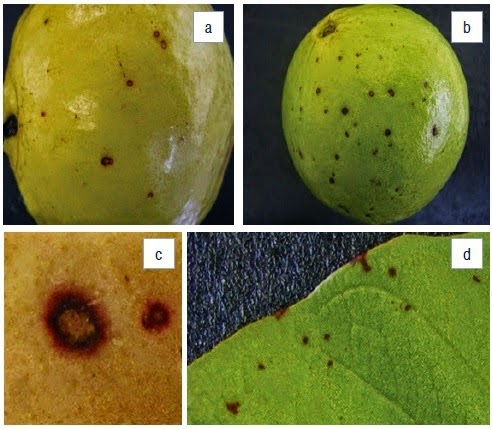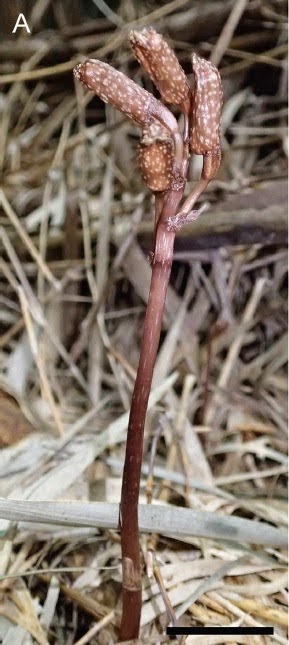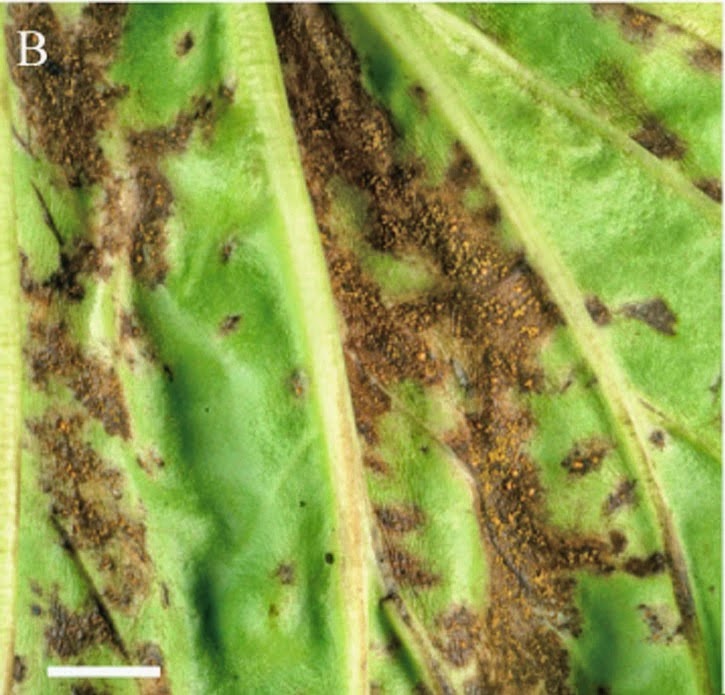Lichens are symbiotic organisms, each consisting of a Fungus and an
Alga, the Fungus obtaining nutrients from the substrate (surface upon which the
Lichen sits), while the Alga produces carbohydrates through photosynthesis.
They the Fungi and Algae involved can often form relationships with more than
one member of the other group, and sometimes more complex communities, with
more than one Fungus or Algae. Like many organisms, Lichens are prone to
infections by parasites, which live off the nutrients and carbohydrates
provided by the members of the Lichen, but provide nothing in return. Fungi of
the genus Tremella are parasites of
Lichen Fungi, their hyphae growing within the hyphae of the host Fungus. Some
members of this group produce visible galls on the surface of the Lichen, while
others produce no visible symptoms, so the true diversity of these Fungi is not
well understood.
In a paper published in the journal MycoKeys on 16 September 2014,
Ana Millanes of the Departamento de Biología y Geología at the Universidad ReyJuan Carlos, Paul Diederich of the Musée national d’histoire naturelle in Luxembourg,
Martin Westberg of the Department of Botany at the Swedish Museum of NaturalHistory, Tommy Knutsson of Mörbylånga in Sweden and Mats Wedin, also of the
Department of Botany at the Swedish Museum of Natural History, describe a new
species of Lichen-parasitizing Fungi from Scandinavia.
The new species is named Tremella rhizocarpicola,
in reference to its host Fungus, the Lichen forming Rhizocarpon lavatum. Tremella rhizocarpicola was
found infecting Rhizocarpon lavatum
growing on siliclastic rocks near large bodies of water in Sweden, Norway and
the Faroe Islands. The parasite lives entirely within the hyphae of the host,
but causes the formation of large, visible
black growths on the surface of the Lichen.
Macroscopic habit of Tremella rhizocarpicola on Rhizocarpon lavatum,
on the north side of lake Stranddalsvatnet in Rogaland, Norway. Scale bar is 1 mm. Millanes et al. (2014).
See also…
Guavas, Psidium guajava,
are fruit bearing trees in the Myrtle Family, Myrtaceae, closely related to Eucalyptus. They are native to Mexico,
Central America and the Caribbean Islands, but have been introduced to many
countries as a commercial fruit crop, the largest producers being Mexico, India
and Brazil. Like most...
Orchids of the genus Gastrodia
are found across temperate and tropical Asia, Oceania and Madagascar. They are mycoheterotrophs;
parasitic plants which obtain nutrients and sugars from Mycorrhizal Fungi (Fungi which normally form symbiotic relationships with
plants). They are a diverse group with
over fifty species ranging in size from under five to over 100 cm.
The Chatham Island Forget-me-not (Myosotidium hortensium) is a
robust perennial herbaceous plant found in coastal habitats in the
Chatham Islands, a remote group of islands roughly 860 kmeast of
Christchurch, New Zealand. The plant of interest to botanists and
biogeographers, since its closest known relatives are found in the
Mediterranean region of...
Follow Sciency Thoughts on Facebook.




